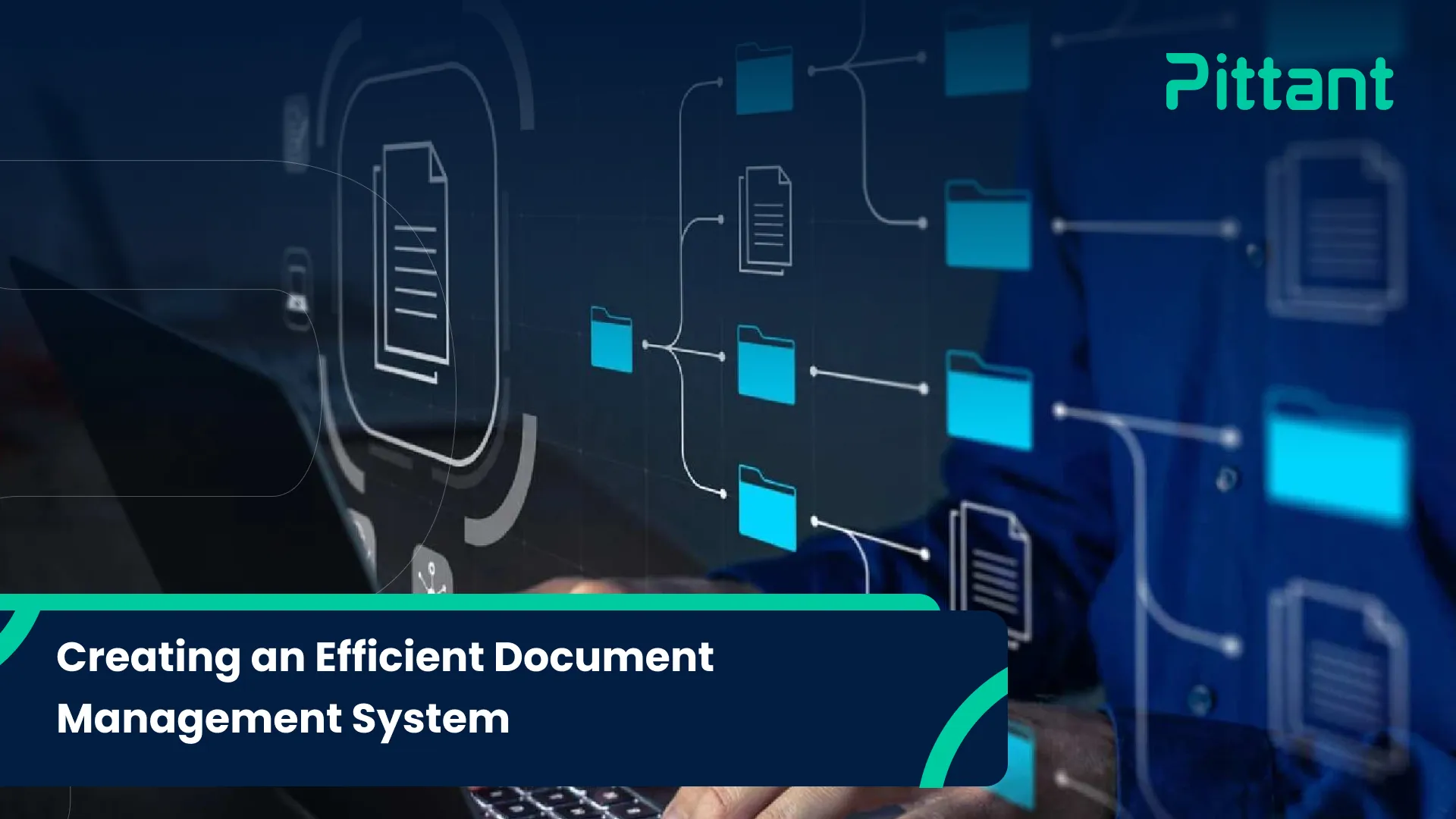Understanding what is document management is important. A Document Management System is the linchpin of document handling. It ensures organization and accessibility. In this digital age information is abundant. A robust DMS becomes the bedrock of streamlined workflows.
In this article, we discuss the importance of DMS and its evolution. We also cover the transformative role it plays in modern business environment. We keep the focus for this in the current year of 2025. We share how businesses can harness the power of efficient document management.
Explaining Document Management System
Document management is important for businesses seeking streamlined operations and improved efficiency. A Document Management System is a digital solution. It has been designed to organize, store, and track documents. This transforms traditional document handling.
A DMS replaces physical filing cabinets with a secure and easily accessible digital repository. Its primary goal is to facilitate the systematic organization, storage, and retrieval of documents in a digital format. The evolution of technology has drove DMS systems beyond mere file storage.
Modern DMS incorporate advanced features. These include version control, document tracking, and security protocols. They serve as centralized platforms for storing and managing documents. It ensures the right information is available to the right people at the right time.
The efficiency gains from adopting a DMS system are extensive. Businesses can simplify workflows, reduce errors, and enhance collaboration among team members. With the ability to adapt to changing business needs, these systems have become indispensable in today’s work environments.
The integration of Artificial Intelligence and automation has elevated the capabilities of DMS. Intelligent categorization, automated workflows and predictive analytics contribute to a more reliable document management process.
It is a tool for digital storage. It is a strategic asset that empowers businesses for handling complex information management. Technology continues to advance. The role of DMS in enhancing organizational efficiency and agility will undoubtedly become even more pronounced.
Why Document Management Systems Matter
Efficiency and Productivity Boost
Efficiency and productivity are necessary in the success of any business. Understanding what is document management software in Saudi Arabia becomes huge in achieving these goals. A well-implemented DMS plays a central role in ensuring productivity.
With a DMS in place, the benefits are evident:
- Swift Access to Information: Documents become easily accessible. It minimizes the time spent searching for information.
- Workflow Optimization: Systematic organization of documents modernizes workflows. It eliminates bottlenecks. This enhances overall efficiency.
- Operational Streamlining: DMS optimizes document workflows. It contributes to operational efficiency within the organization.
Data Security and Compliance
Document management is important for protecting sensitive data. DMS emerges as the requirement for businesses dedicated to ensuring data security and compliance. Implementing a DMS emphasizes a firm commitment to data security.
- Stringent Access Controls: The DMS enforces granular access controls. It limits access to sensitive documents to authorized personnel.
- Detailed Audit Trails: Integrated audit trails track document movements. It ensures transparency. It assists with compliance with industry regulations.
- Compliance Assurance: The DMS’s security features contribute to meeting industry-specific regulations. It reduces the risk of legal repercussions.
A DMS transcends mere document organization. It stands as a guardian of sensitive information. Choosing a well-integrated DMS represents a proactive step for businesses. It strengthens data security and ensuring unwavering compliance with the regulations of the country.
Collaboration Enhancement
Document management plays a huge part in collaboration enhancement. A robust document management system is a storage solution. It is tool for promoting teamwork too.
The question becomes not just what is document management but why use a document management system? The answer lies in the profound impact it has on collaboration within an organization.
With a well-implemented system, teams can concurrently work on documents. They can be breaking down silos and enjoy a dynamic work culture. This collaborative potential is a catalyst for innovation. It ensures that ideas flow freely and productivity soars.
DMS facilitate real-time collaboration. It enables teams to contribute collectively to projects. This goes beyond file sharing. It streamlines workflows. This accelerates decision-making and elevates the overall productivity of the organization.
The collaboration enhancement aspect of a DMS is a strategic investment for businesses. It is about organizing files. It is about creating a collaborative environment where information flows. This is also where teams can work together effortlessly.
The role of document management in collaboration enhancement becomes increasingly huge. It is a technological upgrade. There is a shift in how teams collaborate and achieve collective success.
Evolution of Document Management Systems
The evolution of DMS has been profound. This transitions from basic file storage to sophisticated solutions offering advanced features. Early DMS primarily focused on storage and retrieval. Modern systems integrate artificial intelligence, machine learning, and automation to restructure processes further.
From Local Servers to Cloud-Based Solutions
Document management reveals its evolution from reliance on local servers to the current era of cloud-based solutions. In the past, document management was constrained by the limitations of local servers. This restricts accessibility and collaboration.
The shift towards cloud-based solutions marks a transformative leap. Modern document management embraces the cloud. It offers unparalleled accessibility, collaboration, and scalability. This transition caters to the needs of businesses in today’s fast-paced digital environment.
Cloud-based document management goes beyond remote access. It facilitates collaboration among team members regardless of geographical boundaries. The agility, scalability, and cost-effectiveness of cloud solutions have revolutionized what is document management in contemporary businesses.
As organizations continue to embrace this shift, the benefits of cloud-based document management become increasingly apparent. Enhanced accessibility, robust collaboration, and scalability place cloud-based solutions as a basis in the efficient functioning of modern businesses. This evolution emphasizes the adaptability of document management to meet current digital demands.
Integration with Business Applications
Document management involves integration of this process with other business applications. DMS have advanced to go beyond standalone solutions. They can be integrated with various business applications to enhance efficiency. This holistic integration ensures that document workflows align with broader organizational objectives.
This integrated approach enhances functionality by merging document management with Customer Relationship Management, Enterprise Resource Planning and other systems. Such synergy creates a unified ecosystem within an organization. It ensures data consistency across diverse departments.
The collaboration between document management and other business applications assists with a cohesive workflow. Businesses can derive comprehensive insights. This aids them in data-driven decision-making.
Advanced Search and Retrieval Capabilities
Document management expands to the sophisticated advanced search and retrieval capabilities. Modern DMS transcend basic organization. It offers users intuitive tools for swiftly locating and retrieving documents.
Intelligent Search Algorithms: DMS employ intelligent search algorithms. It allows users to find documents amidst vast repositories.
Metadata Tagging: The inclusion of metadata tagging further enhances search precision. This ensures documents are accurately categorized for retrieval.
These advanced capabilities address the evolving needs of businesses dealing with large volumes of digital content. Users can effortlessly locate specific documents. This saves time and improves user experience. The transition from traditional manual searches to these advanced capabilities marks a paradigm shift in document management.
This evolution streamlines document retrieval. It also contributes to enhanced productivity and efficiency within organizations. The importance of advanced search and retrieval capabilities becomes major. It helps with harnessing the full potential of DMS.
Changing Dynamics: The Modern Role of Document Management Systems
The role of DMS has transcended mere file storage. Modern DMS is a tool that adapts to the changing needs of businesses. It acts as a centralized hub for information. It promotes collaboration and makes sure organizations stay agile in the face of arising challenges.
- Cloud Integration: The shift towards cloud-based DMS has been monumental. Cloud integration allows for access to documents. It eases remote work and enhancing flexibility.
- Mobile Accessibility: In an era dominated by mobile devices, DMS platforms have become mobile-friendly. They enable users to access, edit, and share documents on the go. This accessibility is important for businesses with dispersed teams or a mobile workforce.
- Automation for Efficiency: Modern DMS goes beyond basic storage. It incorporates automation features to streamline workflows. Automation reduces manual intervention. It minimizes errors. It also accelerates document-related processes. This will optimize efficiency.
- Integration with Business Applications: The best document management systems integrate with other business applications. It creates a cohesive digital ecosystem. This integration enhances connectivity. It lets unified data flow between different facets of an organization.
How Pittant Can Help You with Document Management
Working with what is document management becomes easier with Pittant. It offers more than just a solution — it provides the best document management system for businesses in Saudi Arabia.
Intuitive Integration: Pittant’s platform incorporates HR, Finance, Planning, and Analytics. It provides an elaborate solution beyond conventional document management.
Streamlined Operations: Pittant simplifies complex workflows by optimizing document. This contributes to operational efficiency for businesses of all sizes.
Data-Driven Decisions: Pittant’s analytics capabilities empower businesses to make informed decisions. It uses insights derived from its integrated document management system.
Pittant stands out as a leading solution for document management especially in Saudi Arabia. The platform goes beyond traditional document organization by integrating seamlessly with HR and Payroll processes. This intuitive integration ensures that paperwork management aligns with broader organizational objectives, fostering a holistic approach to business management.
Pittant’s emphasis on reforming operations goes hand in hand with the needs of businesses. The DMS is designed to optimize workflows. It empowers organizations to operate more efficiently and adapt to changing circumstances.
Pittant’s commitment to data-driven decision-making sets it apart. The analytics capabilities embedded within the DMS provide businesses with valuable insights. This improves the paperwork management process. It also contributes to the strategic decision-making process.
Choosing Pittant as the DMS is a strategic move for businesses in Saudi Arabia. Its integration, operations, and data-driven decision-making capabilities make it the best document management system for those aiming to simplify complexities.
Maximize collaboration with a robust DMS? Connect with Pittant to explore further. Email [email protected] for insights.
FAQs
What is a Document Management System (DMS) and how does it work?
A Document Management System (DMS) is a digital platform where you can store, organize and track business documents in one secure space. It captures files, tags them for easy search, controls access and keeps an audit trail so nothing gets lost or mishandled.
What are the key features of a modern DMS?
Smart search, version control, workflow automation, access permissions, audit logs, secure storage and seamless integration with common workplace tools are among the best features of a modern DMS.
How have Document Management Systems evolved from traditional storage to AI powered platforms?
They moved from simple digital filing cabinets to intelligent systems that auto classify content, extract data, predict user needs and streamline workflows. The shift is driven by cloud tech and machine learning, which reduce manual work and speed up operations.
What are the benefits of using a cloud based document management system?
You get remote access, real time collaboration, automatic updates, scalable storage and strong built in security. Cloud systems also cut the cost of maintaining physical servers.
How does a DMS improve security and ensure compliance for businesses?
A DMS uses encryption, access controls, activity logs and retention policies to keep documents safe. These controls help businesses meet regulatory requirements and avoid accidental data exposure.
Why should businesses in Saudi Arabia consider Pittant for document management?
Pittant provides secure, cloud ready solutions built for the workflows and compliance needs of Saudi organizations. The platform streamlines document handling and reduces admin pressure while helping companies stay aligned with local regulations.





